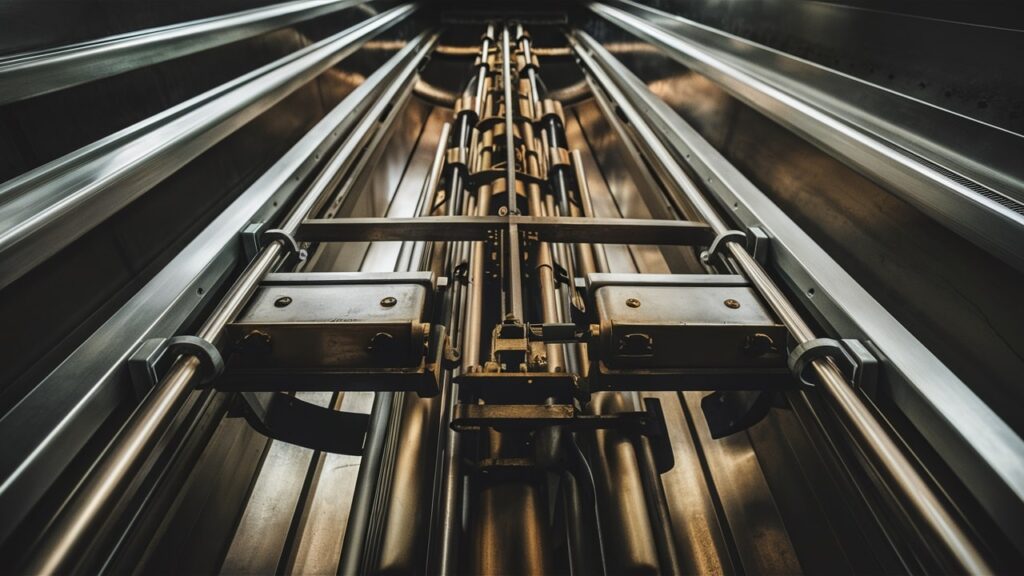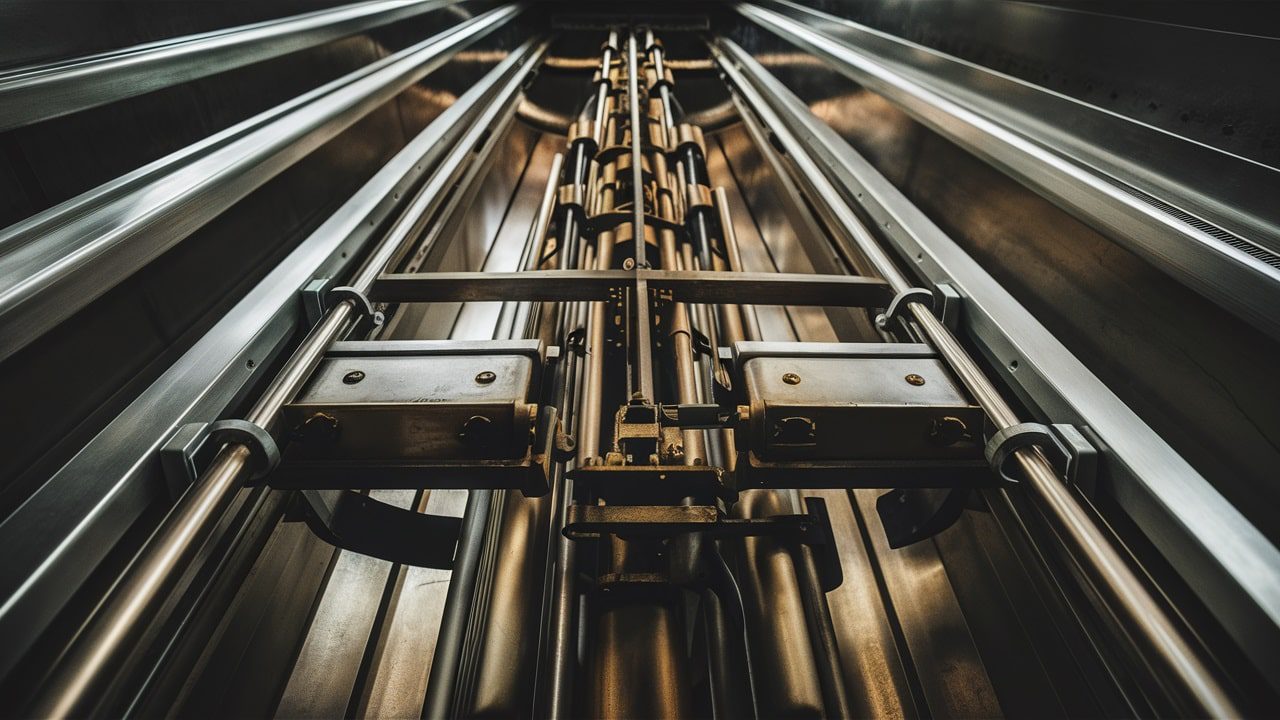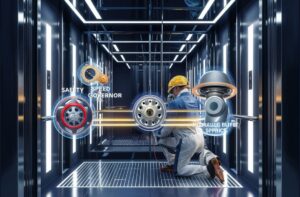Elevators are an integral part of modern buildings, ensuring smooth vertical transportation across multiple floors. While many focus on the aesthetic and speed of elevators, the inner mechanics are equally fascinating. Among the key components are the elevator guide rails and counterweights, which play crucial roles in the safe and efficient operation of elevators. This article provides an in-depth exploration of these components, their functions, and their importance in the elevator system.
Understanding Elevator Guide Rails

What Are Elevator Guide Rails?
Elevator guide rails are steel tracks installed along the length of the elevator shaft. These rails guide the elevator car and counterweight, ensuring they move smoothly and safely within the shaft. Guide rails are fundamental for maintaining the stability and alignment of the elevator car during its operation.
Types of Elevator Guide Rails
- T-Guide Rails: The most common type, T-guide rails, are used in both passenger and freight elevators. They are named for their “T” shape, which provides strong support and stability.
- Round Guide Rails: These are typically used in special applications where traditional T-guides may not be suitable. Their round shape offers different handling characteristics.
- Solid Guide Rails: Known for their durability, solid guide rails are often used in heavy-duty applications such as freight elevators.
Materials Used in Guide Rails
Elevator guide rails are usually made from high-quality steel, which ensures their strength and durability. The steel is often treated to resist wear and corrosion, extending the lifespan of the guide rails.
The Function of Guide Rails in Elevator Systems
Stability and Safety
Guide rails provide essential stability to the elevator car, preventing it from swaying or moving erratically. Primarily, elevator guide rails serve two functions. One function is a provided by 16mm hollow guide rails, which facilitate the up-and-down movement of the counterweight. The other function is handled by solid 10mm guide rails, which guide the travel of the elevator cars. This stability is particularly important in high-rise buildings, where even slight deviations can cause significant problems.
Alignment
Proper alignment is critical for the smooth operation of an elevator. Guide rails ensure that the elevator car moves vertically in a straight path, avoiding any lateral movement that could lead to mechanical failures or accidents.
Braking Mechanism
In the event of an emergency, such as a power failure, the elevator’s safety system engages the guide rails. Brakes are applied to the guide rails to bring the elevator car to a controlled stop, ensuring the safety of the passengers.
An Overview of Elevator Counterweights
What Are Elevator Counterweights?
Elevator counterweights are weights installed in the elevator shaft to balance the weight of the elevator car and its load. They play a crucial role in reducing the energy required to move the elevator and enhancing its overall efficiency.
Composition and Design
Counterweights are typically made from cast iron or steel and are designed to match the weight of the empty elevator car plus a portion of the maximum load it can carry. This balance ensures that the motor only needs to overcome the weight difference between the car and the counterweight, rather than lifting the full weight of the car and its contents.
The Role of Counterweights in Elevator Operation
Energy Efficiency
By balancing the weight of the elevator car, counterweights significantly reduce the energy consumption of the elevator system. This makes the elevator more efficient and cost-effective to operate.
Load Distribution
Counterweights help distribute the load evenly across the elevator system, reducing wear and tear on the mechanical components. This prolongs the lifespan of the elevator and reduces maintenance costs.
Enhanced Performance
By using counterweights to balance the load, elevators run more smoothly and swiftly, making your ride a breeze. This improves the overall performance and user experience of the elevator system.
Maintenance of Elevator Guide Rails and Counterweights
Regular Inspections
Regular inspections are crucial to ensuring the proper functioning of elevator guide rails and counterweights. Inspections help identify any signs of wear, misalignment, or damage that could affect the elevator’s performance and safety.
Lubrication
Guide rails require regular lubrication to minimize friction and wear. Proper lubrication ensures smooth movement of the elevator car and reduces the risk of mechanical failures.
Replacement of Worn Components
Over time, components such as guide rails and counterweights may wear out and require replacement. Timely replacement of worn components is essential to maintain the safety and efficiency of the elevator system.
Innovations in Elevator Technology
Advanced Materials
The use of advanced materials such as composite metals and alloys is improving the durability and performance of elevator guide rails and counterweights. These materials offer better resistance to wear and corrosion, extending the lifespan of the components.
Smart Monitoring Systems
Modern elevators are equipped with smart monitoring systems that continuously check the condition of guide rails and counterweights. These systems can predict potential failures and alert maintenance teams before problems occur, ensuring uninterrupted operation.
Energy-Efficient Designs
Innovations in energy-efficient designs are making elevators more sustainable. Counterweights are now designed to optimize energy use, and regenerative braking systems are being used to capture and reuse energy, reducing the overall environmental impact of elevators.
Conclusion
Elevator guide rails and counterweights are essential components that ensure the safe, efficient, and smooth operation of elevators. Understanding their functions and importance helps in appreciating the complex mechanics behind modern elevator systems. With ongoing innovations and advancements in materials and technology, the future of elevator systems promises to be even more efficient and reliable. Regular maintenance and smart monitoring will continue to play crucial roles in ensuring the longevity and performance of these critical components.
In the end, a well-maintained elevator system, with robust guide rails and balanced counterweights, not only enhances the user experience but also contributes to the overall safety and efficiency of buildings.
Read another article about Choosing Right Elevator For Your Building.





Pingback: Elevator Shafts: Components, Functionality & Construction Process
Pingback: Elevator noise: Causes & Fixes
Pingback: Elevator Insights: Unlocking the Mystery